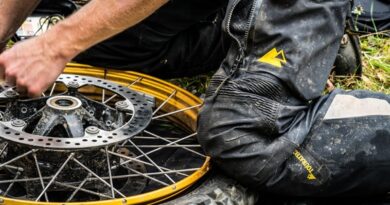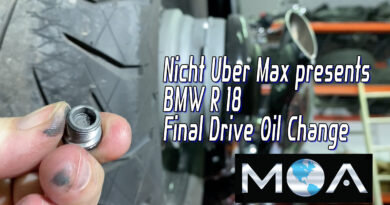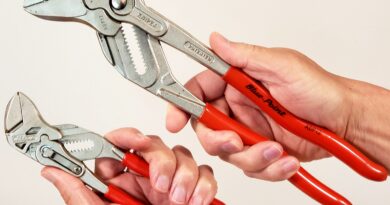BMW’s Heritage Boxer Time Machines
Photos by Will Guyan, Jon Beck and BMW Motorrad
In 2007, BMW was a very different company, straining to understand the new market demographics. All the faithful lovers of Bavarian two-wheeled sport were awaiting the newest boxer, the HP2 Sport, with its unheard of double overhead cam power and enough unique carbon fiber bits to make you try hard to justify the cost.
The previous year BMW had quietly returned to U.S. road racing, winning the prestigious Eight Hours of Daytona on a basically stock R1200S, supported by Motorrad USA via San Jose BMW and BMW of Atlanta. I’ll never forget that Daytona announcer broadcasting, “What kind of BMWs are those?” The competition was Aprilia, Ducati, Suzuki and Buell. The BMW R 1200 S won by 15 seconds after eight solid hours, and it used no oil!

In 2008, BMW Motorrad Motorsport came back to Daytona with four HP2 Sports, set up for competition, with a full cadre of 20 German techs from Munich. They placed fifth and sixth in the gnarly AMA Formula Extreme series. Again, they were supported by the same two BMW dealerships as well. This was the first time anybody had seen the HP2 Sport, and it was not a bit disappointing.
Then, in 2009, BMW blew minds with their first superbike, the S 1000 RR, garnering more free press than the iconic Ducati 916. From 2009 to ’13, BMW competed in the World Superbike series with top riders, winning several firsts and many podiums before abandoning the series midway in 2013. But one thing was certain: BMW was no longer a builder of sturdy touring bikes alone. They were a force to be reckoned with. No other stock superbike came close to the game-changing BMW.
Now, finally, they’ve reconnected with their historic roots, bringing to market the R nineT, a bike created to be customized to the owner’s personal liking. They seeded top custom builders worldwide with stock nineTs to see what would happen. The nineT was a huge hit—a beautiful, naked bike without riding modes, traction control, electronic suspension and all that. The riding public yearned for an old school bike they could make their own, with their wrist providing traction control, old school style. Oh, it had ABS and well over 100 horsepower at the rear wheel with its HP2 Sport-derived boxer mill and was a kick in the pants to ride, but it’s a relatively simple, naked motorcycle.

BMW, lubricated by success and with lots of enthusiasts buying their machines, are offering four additional nineT models that are even more basic and priced thousands of dollars lower than the top shelf R nineT. The Racer, the Pure, the Scrambler, and the Urban GS, modeled on the original R 80 G/S, join the original nineT on the sales floor with different forks, and minus the high zoot aluminum tank.
Recently we got to ride two of these new machines, the R nineT Racer, with its authentic café racer fairing, and the base model R nineT Pure, as basic a boxer as you can get with the same powerful engine, slick six speed gear box and world class brakes as the original R nineT, starting at $11,995 plus fees. Add the Scrambler, with its high pipes and street knobbies, and the possibilities seem endless. Which style rocks your self-image? All share the same running gear, but with different styles to suit each individual. Brilliant. Same, but different.
The low-slung Racer is drop dead gorgeous and has a stretched out riding position to match. After the first 15 minutes getting used to the café position, the fun delivered by this stunning machine makes you forget the slightly cramped ergonomics. This thing lives to be wrung out in the twisties and ridden across town to bike night or to a cafe. But for cross country rides, you may prefer the Pure or even the Scrambler with their sit-up straight ergos. To improve this, San Jose BMW has already created a gorgeous top triple clamp that raises the low bars just enough.

If you want to relive the era of vintage café racers without the forgotten reality of leaky carbs, sketchy brakes, and sluggish power, check out these nineT derivatives. The power train is identical to the original bike, but there are subtle differences such as the basic, old school telescopic fork. For top notch esthetics, the Racer’s distinctive half fairing, fuel tank and seat form a striking vintage silhouette. The long wheelbase and the low handlebars provide a sporty, low-slung seating position. The set back footrests let you lean into an aggressive riding position. It feels, sounds and looks like a café racer—so good, BMW, for following your historic past, even if back in the day there were no BMW-based café racers. Better late than never.
The air/oil-cooled boxer flat twin engine with balancer shaft, four valves per cylinder, double overhead cams, wet sump, excellent standard ABS and optional traction control add up to one great, motive beast. Right around 100 rear wheel hp and 85 foot-pounds of torque will let you rule the twisties and squirt through traffic like a banshee on steroids. Boxer twins are smooth, powerful, easy to maintain, extremely reliable and I daresay addictive, too. With a pipe that makes them sound as powerful as they are, I can see plenty of old BMW riders as well as new blood buying this machine, because it’s just plain fun, relatively affordable, very well made, and brutally sexy. It also has a three-year warranty with excellent dealer access.
The six-speed gear box and the light dry clutch are as slick as they come, and the excellent “one finger” BMW brakes are among the best on the market. Seat height is 32”, and the steel gas tank will happily accept a magnetic bag. The original R nineT aluminum tank is a $1,000 option, but I can’t understand why you’d want one. Wheels are sporty 17-inchers, drive is via shaft, and the telescopic 43mm forks are more than adequate for anything we rode, including potholes, broken pavement and curbs. No problem on graded dirt roads either, if your passion is the high-pipe Scrambler.

The Racer’s handlebars are positioned low on the top triple clamp, clip-on style and a moderate offset helps the wrists. It has period-correct, handsomely designed analog dual clocks. The footrests are slightly rearward and upward to deliver a sporty seating position that’s far more comfortable than it appears. Truth is, lane splitting in LA traffic on the bike was an unexpected breeze. The padding on the stylish solo seat is slightly raised at the rear, which helps. An optional rear frame adds the ability to carry a passenger. The range of optional equipment available from BMW includes period-correct spoked wheels, lowered suspension and much more. You can add original BMW accessories such as HP carbon fiber parts, the classy HP sports silencer, and many new CNC machined parts. There are plenty of options your dealer can fill you in on, such as passenger accommodations. The Racer weighs in at 485 lbs., and tubeless, cast wheels are standard. Make one yours for $13,025 list, plus fees.
The Pure is a basic, naked bike with more comfortable, day-long ergos and is very handsome, if slightly less aesthetically appealing. It has a single speedometer that contains more info than it would appear. The Scrambler isn’t really what its name suggests, but it’ll comfortably tackle any forest service road or graded byway with ease with its high pipes, street knobbies and minimalist seat. It’s a fine machine that’ll take on paved or graded roads aplenty. See your dealer for a test ride. Starting at $11,995, you’ll like it.



Cockpit view of the Pure.

Cockpit view of the Racer.



